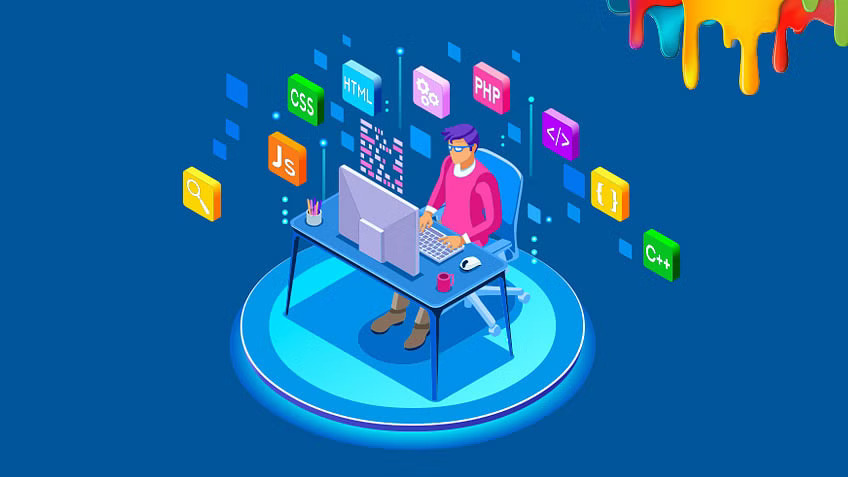In today’s fast-paced digital world, businesses face the constant challenge of evolving customer expectations, competitive pressures, and rapidly changing technologies. Java full stack developers are uniquely equipped to address these demands by creating end-to-end solutions that are scalable, secure, and performance-driven. By leveraging their expertise across the front-end and back-end development spectrum, these professionals bridge the gap between business needs and technology.
Understanding the Role of a Java Full Stack Developer
A Java full stack developer is proficient in both client-side and server-side programming. They are skilled in Java-based backend technologies such as Spring Boot, Hibernate, and RESTful APIs, and are also adept in front-end technologies like HTML, CSS, JavaScript, Angular, or React. This comprehensive skill set allows them to manage entire software development projects from concept to deployment.
Real-World Business Challenges Solved by Java Full Stack Developers
1. Creating Scalable Enterprise Applications
Modern enterprises require applications that scale effortlessly as their user base grows. Java full stack developers use microservices architecture with Spring Boot to build modular and scalable applications. This allows businesses to add features or handle increased traffic without overhauling the entire system.
For example, a logistics company facing bottlenecks during peak seasons turned to full stack software developers who redesigned their backend using scalable Java microservices, significantly improving performance and uptime.
2. Enhancing User Experience with Intuitive Front-End Interfaces
User experience is a critical determinant of digital success. Java full stack developers ensure that the user interface (UI) is not only visually appealing but also functional and responsive. By integrating frameworks like Angular or React with backend services, they create seamless user experiences.
Consider a fintech startup aiming to improve user retention. By hiring full stack developers, they were able to revamp their UI and integrate real-time financial dashboards, leading to a 35% increase in user engagement.
3. Integrating Legacy Systems with Modern Technologies
Many organizations still rely on outdated legacy systems. Transitioning these into modern platforms without disrupting business operations is a major challenge. Java full stack developers facilitate this transformation by integrating modern Java backend systems with legacy databases through APIs.
A healthcare firm struggling with siloed patient data hired a Java full stack development team to modernize their legacy application. Through smart integration techniques and cloud deployment, they achieved real-time data access across departments.
4. Speeding Up Time-to-Market
In highly competitive sectors, speed is of the essence. A single team of Java full stack developers can handle both the front and back ends, reducing communication gaps, eliminating dependency bottlenecks, and accelerating project timelines.
An eCommerce startup leveraged the skills of Java full stack developers to launch their MVP in just eight weeks—well ahead of schedule—by streamlining workflows and maintaining a single codebase.
5. Providing Robust Security Across the Application Stack
Security is a top concern for any business. Full stack developers are well-versed in enforcing security best practices on both ends—data encryption, secure authentication, and session management. Java’s robust ecosystem makes it easier to integrate security protocols across the stack.
A legal tech firm used a full stack software developer team to revamp their client portal. With multi-factor authentication and encrypted storage, they ensured data integrity and compliance with industry standards.
Key Technologies Used by Java Full Stack Developers
Frontend Technologies
-
HTML5, CSS3, and JavaScript: Core building blocks for web UIs.
-
React.js / Angular.js: Frameworks that provide reactive, component-driven architecture.
-
Bootstrap / Tailwind CSS: For responsive design and cross-device compatibility.
Backend Technologies
-
Java (JDK 11/17): The backbone of robust backend systems.
-
Spring Boot / Spring MVC: For building microservices and RESTful APIs.
-
Hibernate: For ORM-based interaction with relational databases.
-
Apache Kafka / RabbitMQ: For handling asynchronous messaging.
Databases
-
MySQL / PostgreSQL: Reliable relational databases.
-
MongoDB / Cassandra: NoSQL databases for flexible data storage.
DevOps and Deployment
-
Docker / Kubernetes: For containerization and orchestration.
-
Jenkins / GitLab CI: For continuous integration and deployment.
-
AWS / Azure / Google Cloud: Scalable cloud platforms for deployment.
Why Businesses Prefer to Hire Full Stack Developers
Hiring separate teams for frontend and backend development leads to silos and miscommunication. When businesses hire full stack developers, they get:
-
Reduced development costs
-
Faster project delivery
-
Improved collaboration
-
Greater accountability
These developers understand the complete architecture and can troubleshoot, optimize, and innovate across the stack without delays.
Industries Benefiting from Java Full Stack Development
Java full stack development has broad applications across industries:
-
Healthcare: Real-time patient portals, appointment scheduling systems.
-
Banking & Finance: Secure online banking interfaces and backend transaction processing.
-
Retail & eCommerce: Scalable product catalogs, shopping carts, and inventory management systems.
-
Education: Learning Management Systems (LMS) with integrated video and assessment tools.
-
Travel & Hospitality: Real-time booking engines and dynamic pricing algorithms.
Future Trends in Java Full Stack Development
As businesses increasingly embrace AI, IoT, and cloud-native architectures, the role of full stack software developers will continue to evolve. Java’s adaptability ensures that it will remain a preferred backend language while integrating with next-gen technologies.
Emerging trends include:
-
Serverless architecture with Java functions
-
AI/ML integration into Java applications
-
Progressive Web Apps (PWAs) using Java with Angular/React
-
Cloud-native development using Spring Cloud
Conclusion
Java full stack developers are not just coders—they are strategic assets who align technological solutions with business goals. Their ability to navigate the complexities of both frontend and backend development empowers organizations to innovate, adapt, and grow in the digital era. Whether it’s enhancing user experiences, modernizing infrastructure, or driving operational efficiency, the impact of Java full stack development is profound and measurable.
